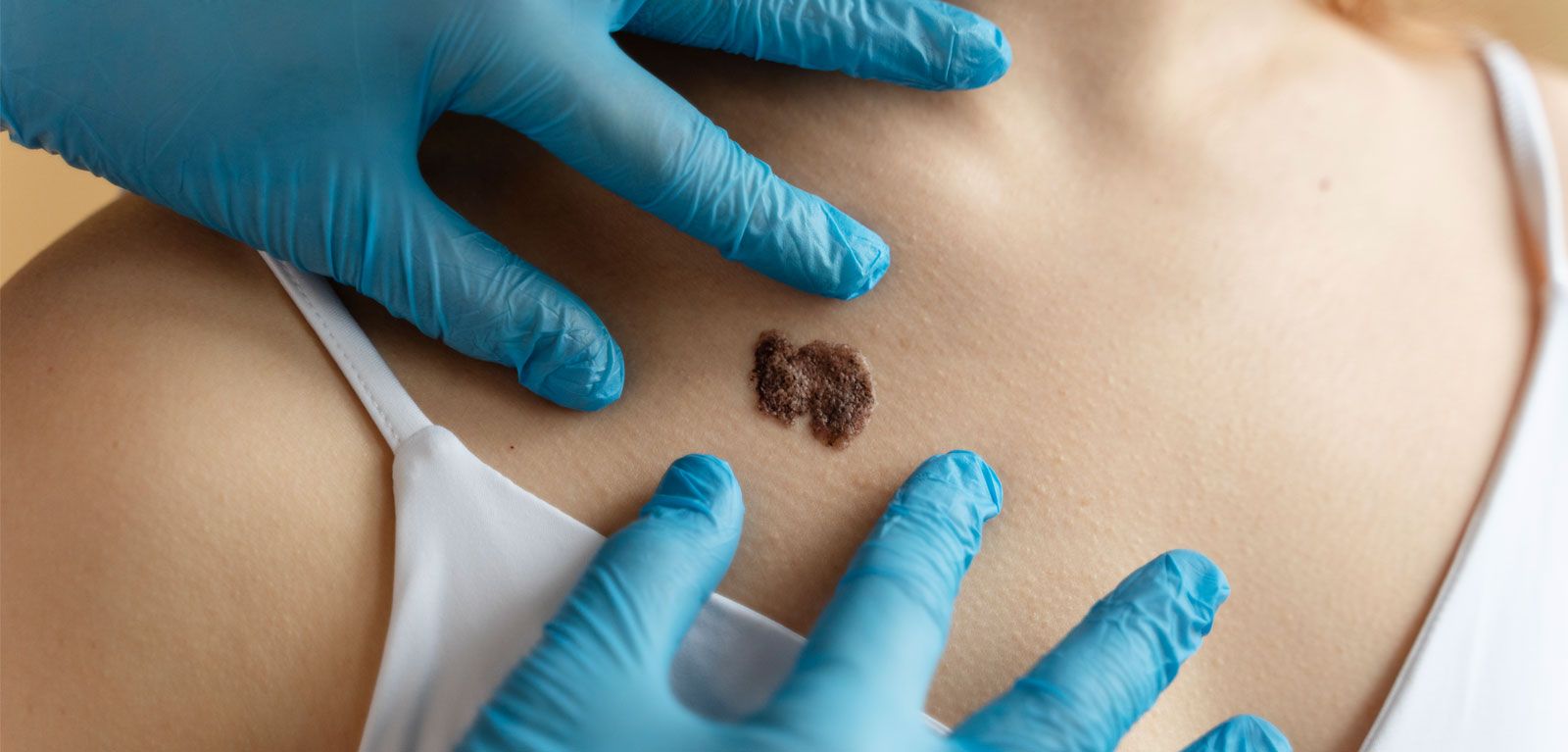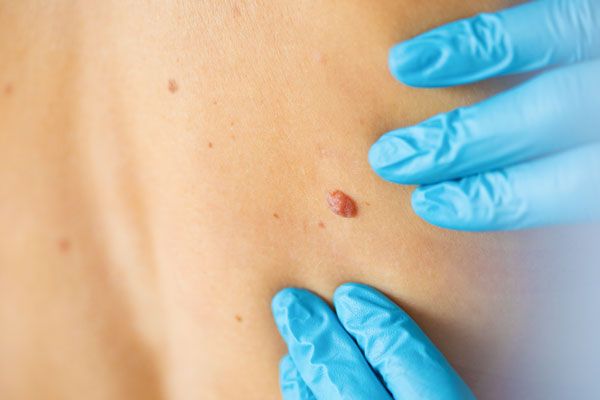Mole.

Overview
Moles are skin growths that appear as dark or colored spots. They are caused by an overgrowth of pigment cells (melanocytes). Moles can be flat or raised, and range in color from red to light or dark brown. Most people have 10 to 40 moles that develop during childhood and adolescence, and they can change in appearance or fade with time. Moles grow slowly and evenly in all directions, and after they stop growing, they may shrink or persist. Moles are typically not a concern unless they change in size, shape, or color.
Cause
Moles are caused by an abnormal growth of pigment-producing cells (melanocytes) in the skin. The exact reason for this growth is unknown, but it is believed to be influenced by:
- Genetic factors |
- Sun exposure |
- Immune status
Symptoms
Moles can develop anywhere on your body, including your scalp, armpits, under your nails, and between your fingers and toes. They typically have the following characteristics:
- Round or oval shape
- Brown, tan, black, blue, red or pink color
- Flat or raised surface
- Smooth or wrinkled texture
- May have hair growing from them
- Usually less than 1/4 inch in diameter
- Symmetrical with smooth borders and uniform color
Any large, irregular, or changing moles should be evaluated by a doctor or dermatologist to ensure they’re not cancerous.
Signs a Mole may not be normal
-
Increase in size
-
Change in color
-
Irregular border
-
Irregular color
-
Asymmetrical shape
-
Pain or itching
-
Bleeding or crusting
Treatments
It’s important to consult a dermatologist or doctor to determine the best treatment option for you.
Surgical techniques include:
- Excision biopsy of a flat or suspicious melanocytic nevus
- Shave biopsy of a protruding melanocytic nevus
- Electrosurgical destruction
- Laser to lessen pigment or remove coarse hair.

Home care / DIY care
-
Take measures to protect your skin from ultraviolet (UV) radiation.
- Avoid peak sun times.
- Use sunscreen year-round.
- Use sunglasses, broad-brimmed hats, long sleeves, and other protective clothing.
-
Don’t attempt to pick off a mole or cut it off yourself with a knife, razor blade, or string as it can cause bleeding, infection, and scarring.
-
Homemade cures like using apple cider vinegar, baking soda, or garlic are rarely effective or safe.
-
Don’t try burning it off with hydrogen peroxide, weak solutions are ineffective while stronger ones can cause damage to your skin.
-
Don’t use removal products intended only for warts as it can cause frostbite or create a scar.
-
Self-examine your skin regularly to detect new lesions or changes in existing ones.
FAQs
Can moles be prevented?
The number of melanocytic naevi can be minimized by strict protection from the sun, starting from birth. Sunscreen
alone is not sufficient to prevent new naevi from appearing.
When to have a mole checked by a doctor?
Dermatologists recommend an annual skin check up.Some of the changes that warrant a doctor’s check include:
- Any new, rapidly growing moles
- A mole that suddenly changes in shape or size
- Moles that are extremely itchy
- Any mole that bleeds on its own without injury or looks infected
Is it possible to have moles removed?
It is possible to have non-cancerous moles removed purely for aesthetic reasons. A dermatologist would be able to do
this for you. Obviously, anything that is potentially removed from the skin can leave a scar, but moles are commonly
removed for cosmetic purposes.
Do moles grow back?
Moles will occasionally grow back, particularly if some tissue is left behind during the procedure.If the mole returns,
another excision can remove it again, though this can increase the risk of infection, bleeding, and scarring.
Is removing a mole a good idea?
Mole removal can prevent the spread of cancerous and precancerous cells and address your cosmetic concerns in
one simple procedure. Results for the majority of patients are permanent, and our patients find that they are able to
enjoy life to the fullest after the removal of a noticeable or suspicious mole.
best natural results
Elara has expertise in technological advances & their suitability, and adaptability to different subjects.
We strive to treat our patients with high quality affordable & excellent Skin and laser treatments. You will get that natural touch of treatment that you will hardly get anywhere with us.
We strive to treat our patients with high quality affordable & excellent Skin and laser treatments. You will get that natural touch of treatment that you will hardly get anywhere with us.
